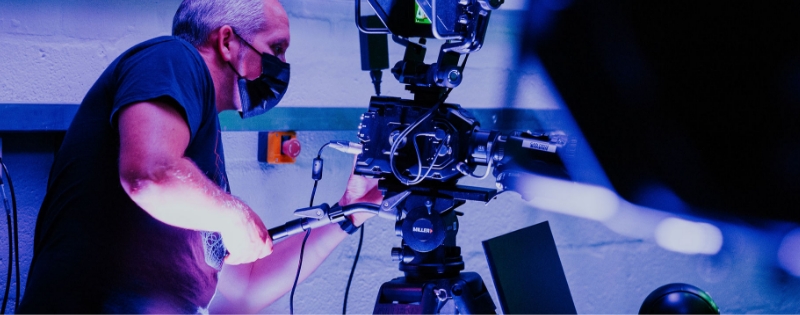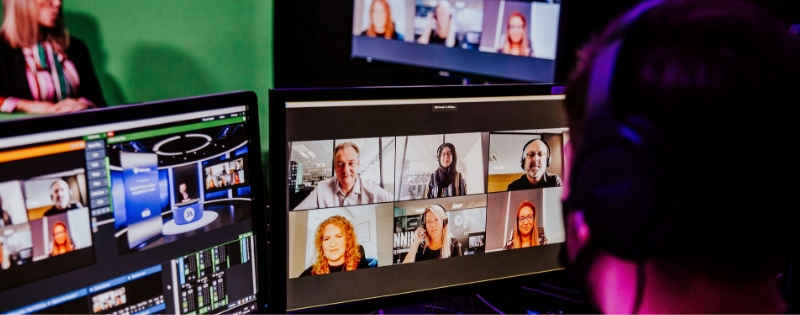Is it the next internet, a glorified game, or an alternate, virtual universe?
Can we say, “all of the above?”
The term originates from the 1992 novel ‘Snowcrash,’ where people in a dystopian Los Angeles wear goggles to enter a “brilliantly lit boulevard that stretches off into an infinite blackness. This boulevard does not really exist, it is a computer-rendered view of an imaginary place.”
Popularising the metaverse concept further, ‘Ready Player One’ was published in 2011, where characters could escape a real global warming crisis and immerse themselves in the digital “OASIS.”
But now it is clear: Not only does life imitate art, so too does business.
In a 2022, real-life landscape, the metaverse has been pinned by tech and business leaders alike as having an undeniable – and perhaps integral – place in the future of CX, marketing and more. A recent Citi report stated, “the total addressable market for the Metaverse could be between $8 trillion and $13 trillion by 2030, with total Metaverse users numbering around five billion.”
“I think about the metaverse as life extended; it’s life augmented; it’s life better” shares Liz Bacelar, Global director of Innovation at Estee Lauder, at the GDS CX Innovation summit.
But what actually is the Metavarse?
While the internet, as we know it, is something we “use,” the metaverse is something within which we can immerse ourselves.
Think about it as a virtual reality that exists, constantly, even when you’re not “plugged in.”
It goes beyond the likes of Grand Theft Auto, or even Fortnight – because these popular games are closed worlds, while the metaverse has the potential to be a series of connected worlds where you can also shop, trade, work, host an art exhibition, buy, and renovate property, recruit staff, and yes, socialize.
“If you’re not sure if a space is a true metaverse” Bacelar advises in her keynote speech “it should have a common identity, an economy, and rules of order.”
And while some commentators are wary of this inbound tech-Goliath (Vice’s Shami Joshi speculates “there’s probably a reason why fictional touchstones for a metaverse, including Ready Player One and Snow Crash, are set in grim dystopias”), it is reaching inevitability-status, whereby CX leaders must consider the ways in which their brand can find its digital place – or even its digital real-estate – to avoid being left behind.
Is the Metaverse ready for us?
It is true, we have witnessed a chaotic start. There are different platforms (from Facebook’s Meta to the popular game creation system, Roblox) which have different rules, layouts, and fundamentally do not overlap. If you purchase a digital asset – such as an NFT – on one metaverse platform, you won’t necessarily be able to see, access or sell it on another.
There are also ethical and logistical questions left unanswered, such as: how would the metaverse be regulated? And how could we avoid a single brand monopolizing ownership?
The developing nature of this technology is reflected in a sense of uncertainty amongst the public and business leaders. A recent IPSOS Mori poll found that while 38% of respondents report familiarity with the metaverse, only 16% (1/5) of American adults can correctly define the term.
Nevertheless, Liz Bacelar makes the case that brand leaders would be making a mistake to “wait for the adoption curve to accelerate” before they integrate the metaverse into their strategies. She references steeper adoption curves and faster patterns of change, “we were given 11 years to catch up with the social media adoption curve, we are not going to be given this time again.”
She asks: “Are we waiting for the tech companies and platforms to ignite their own acceleration? Or are we thinking of ourselves as creators who are factors in igniting that acceleration?”
Still, does it feel unsettling delving into a concept before we really know what it looks like yet? Sure. But Kristi Woolsey, an associate director at BCG Platinion put it this way when interviewed by Forbes Magazine: “If paying real money to own virtual land sounds a bit crazy, remember when most of us thought that purchasing domain names was crazy. But then, suddenly, it wasn’t crazy … [and many] people made a lot of money selling coveted domain names.”
How are brands incorporating the Metaverse into their desired outcomes?
In his keynote speech at the Meet the Boss virtual showcase in partnership with Microsoft, CEO and co-founder of Constellation Research and best-selling tech author, Ray Wang shares:
“Your brand strategy must be in context with your overall metaverse strategy. They cannot be disparate if you want to be successful.”
Wang paints a picture of a bank opening a digital branch within the Roblox world. This would present opportunities, not just in brand awareness, but also in encouraging users to step inside (from the perspective of their digital avatars) and use the bank’s services within the metaverse.
Of course, the eruption of NFTs (Non-Fungible Tokens) has highlighted a way to protect and track one’s digital asset ownership, since the data from each purchase is stored on the blockchain.
Luxury fashion brands are amongst those proactively exploring ways in which the blockchain can be leveraged to allow users to buy and trade their goods in the metaverse. A user’s avatar can enjoy showing off a limited edition, virtual handbag, and while any user could save an image of it, the owner can prove it is uniquely theirs, thanks to the blockchain.
Vogue reported a piece of Dolce and Gabbana digital wearable art, titled the ‘Mosaic Impossible Jacket’ was sold for around $300,000.
To reiterate, this jacket does not physically exist, but its real value within a metaverse setting is representative of the (mostly untapped) opportunities for brands to trigger excitement and awareness, and to see real financial return through digital innovation.
So, where do we start?
Gartner placed the Metaverse within its top 5 emerging technologies for 2022, but added that this was highly unusual since it does not technically fit the ranking’s criteria:
“Though [the metaverse] is outside of the eight-year time frame that usually dictates what we include in this research, it extends computing ability by an order of magnitude beyond what is available today and fundamentally changes how individuals and organizations interact with each other and the world.”
So, while there is plenty of room for development in interlinking the different metaverse worlds, not to mention establishing a framework around governance, licensing, and ownership, this is perhaps a window of time in which brands can “play.” In other words, leaders in CX and marketing can use this moment to immerse themselves and cultivate their own understanding of what exists now, as well as what will exist soon.
What’s more, Liz Bacelar emphasises the need to avoid feeling “overwhelmed and distracted by what other brands are doing.” Instead, she urges brand leaders to tap into the areas of the metaverse which make sense for their business and – more importantly – are of interest to their customer base.
Whether you initially experiment with a metaverse product launch, or an ad placement; a user support group, or a VIP experience; whether you buy a plot of land to open a digital flagship store, or simply auction off a series of limited edition NFTs for charity, Bacelar insists it is time to “stop just reading, [and] start doing.”
–
GDS Summits are tailored 3-day virtual event conferences that bring together business leaders and solution providers to accelerate sales cycles, industry conversations and outcomes. Regarding the CX Innovation Summit 86% of Delegates said the overall experience of Digital Summit they attended was either Above Average or Excellent and 71% of Delegates said the Digital Summit provided them with actionable outcomes to support their current initiatives.
For more, click here to hear from attendees on how GDS has helped them to achieve their business outcomes.
















